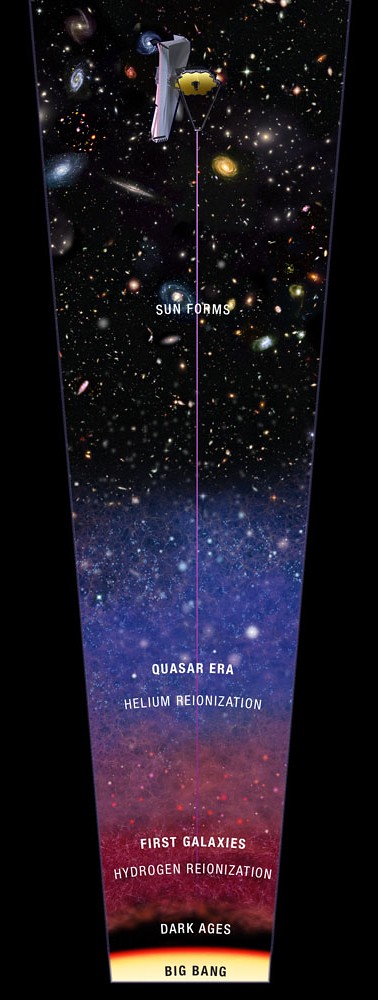Six galaxies detected by Hubble and Spitzer come from a time astronomers call the Cosmic Dawn — a period in the history of our universe just 250-350 million years after the Big Bang (the age of the universe is currently estimated at 13.8 billion years), when the first stars had just started shining.
After the Big Bang, the universe was a bit of a hot mess. It was hot, dense, and virtually opaque. It only became transparent during a period called Recombination, in which a soup of protons and electrons combined to form the first true hydrogen atoms. Prior to the Recombination, the light was not able to travel freely travel through the universe as it was constantly scattered off the free electrons and protons. But as the atoms started combining and there were fewer free particles, this forged a free path for light to travel the universe.
It is in this period that the universe became transparent — and it is also in this period that the six galaxies were formed. It took light from these galaxies most of the universe’s current lifetime to get to us, and looking at them is basically like looking at the Cosmic Dawn. For Professor Richard Ellis from University College London, UK, observations like this are the crowning of decades of work.
In a study published in Monthly Notices of the Royal Astronomical Society, Ellis and colleagues from the UK, Germany, and US, estimated the time at which the Cosmic Dawn began by using six galaxies which they estimate to have formed between 250 to 350 million years after the Big Bang.

In order to estimate the galaxies’ age, they must first consider a particular value of the universe’s rate of expansion (over which there is still some debate). The reason for that is because they are computing the lookback time — the time light from the ancient galaxies traveled to reach us.
As the universe expands, light coming from stars and galaxies has its wavelength increased — something called the redshift effect. By looking at how much the wavelength has increased, researchers can estimate how much light has traveled — and consequently, how old the light-producing object is.
The recent results were based on data from the Hubble and Spitzer space telescopes, both famous for being capable of observing some of the oldest objects in the universe. To estimate the redshift, the team required the Chilean Atacama Large Millimetre Array (ALMA), the European Very Large Telescope, the twin Keck telescopes in Hawaii, and Gemini-South telescope.

The age of the sample is only computed by combining data from all those different telescopes. However, astronomers and cosmologists have great expectations of the Hubble/Spitzer successor, the James Webb Space Telescope (JWST). The most ambitious, the biggest, and the most sensitive telescope NASA created will be able to observe those Cosmic Dawn galaxies directly. JWST is also the hope of a larger sample of galaxies, providing a better representation of the Cosmic Dawn.









